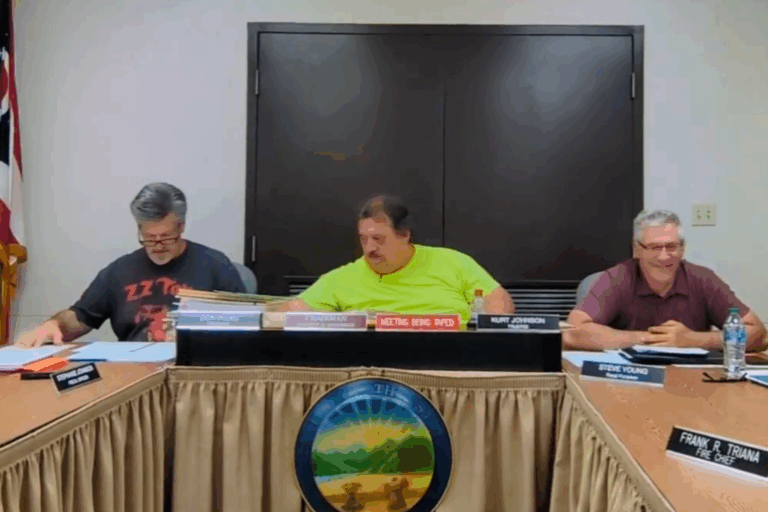
Community Commentary
A passionate discussion has been brewing in the Vermilion community’s social media pages, centered on the growing presence and perceived reckless operation of electric bicycles (e-bikes), particularly among younger riders. Residents shared personal anecdotes of alarming near-misses, fueling a robust debate on safety, responsibility, and the evolving landscape of local transportation.

The online conversation reveals a tension between community members prioritizing immediate safety and those advocating for a broader view of e-bike integration. Comments ranged from direct accounts of dangerous encounters, such as e-bikes running stop signs, weaving through traffic, riding on sidewalks at high speeds, and nearly causing accidents, to pleas for parental involvement and better enforcement of traffic laws.
“My husband and I said the same thing yesterday,” noted one commenter, capturing a shared sentiment of growing concern. Another resident recounted, “Three swerved right in front of me on Vermilion Road. I had to slam on my brakes with all my kids in the car. They’re lucky.” Concerns were also raised about riders using headphones, ignoring horns, and the potential for serious accidents if rules aren’t consistently followed. The sentiment, “Nothing will be done ’til something horrible happens,” echoed a sense of urgency for some.
Conversely, some commenters urged a more understanding approach, suggesting, “let kids be kids,” and drawing comparisons to regular bicycles, arguing, “they go just as fast” and “kids can get hit on a regular bike too.” This perspective highlights the challenge of balancing youthful activity with public safety in shared spaces.
Beyond the Debate: E-Bikes as Green Transportation and a Future Solution
While safety concerns are paramount, many are beginning to see e-bikes not just as a source of friction, but as a significant part of the future of local transportation, especially in towns like Vermilion. E-bikes offer a compelling solution for shorter trips, which for many small-town residents are typically less than five miles.
Data supports that a significant portion of daily trips in local communities are short distances. Studies on travel patterns consistently show an inverse relationship between how far people travel and how frequently they make those trips – meaning shorter distances are traveled more often. For instance, research on intra-urban travel often finds that most residents travel between 1.2 to 6.2 miles for their daily needs. Furthermore, analysis of travel trends, particularly with increased remote work, indicates a rise in short, midday trips (under 3 miles), demonstrating a shift towards more localized travel that can be efficiently covered by active transportation. While rural areas might have longer commutes, studies also show similarities in local travel habits, with residents just as likely to walk for leisure and transportation if options are safe and accessible.
These electric-powered bicycles represent a greener transportation alternative, directly helping to reduce carbon emissions compared to gas-powered vehicles. As gas prices continue to rise, e-bikes become an increasingly attractive and economical way for people to get around for these common short trips. This shift towards cleaner, individualized transportation for shorter distances is seen by many as an inevitable and positive future.
The problem is not going away with just legislation one might argue, suggesting that clear rules are more effective than outright bans or heavy-handed enforcement. The perspective is that these vehicles are here to stay, and understanding their role in sustainable transport is key.
Navigating the Rules: Ohio Laws & Vermilion’s Reality
Amidst the community debate and a vision for future transportation, understanding current regulations is crucial. Ohio law classifies e-bikes into three categories, largely treating them similarly to traditional bicycles:
- Class 1: Pedal-assist only, motor stops assisting at 20 mph.
- Class 2: Has a throttle, motor stops assisting at 20 mph.
- Class 3: Pedal-assist only, motor stops assisting at 28 mph, and must be equipped with a speedometer.
- Note: All classes of e-bikes must have fully operable pedals and a motor less than 750 watts.
Key legal points for e-bike riders in Ohio include:
- No driver’s license, registration, or special insurance is generally required.
- Class 3 riders must be at least 16 years old and are required to wear a helmet. Helmets are strongly recommended for all other classes.
- All e-bikes must follow the same traffic laws as traditional bicycles on roads and streets, including obeying stop signs, speed limits, and traffic lights.
Regarding local infrastructure in Vermilion:
- Vermilion currently has no dedicated bike lanes, a significant factor that funnels e-bike (and regular bike) traffic onto shared roadways or sidewalks.
- Sidewalks: According to Vermilion Codified Ordinances Section 474.06 (4), bicycle riding (which includes e-bikes treated as bicycles) is prohibited on sidewalks only in specific areas where signs have been erected by authority of the Director of Public Safety or Public Service. There is no city-wide blanket ban on sidewalk riding, but riders must always be mindful of pedestrians and posted signs.
- Natural Surface/Mountain Bike Trails: E-bikes are generally not permitted on trails intended primarily for mountain biking, hiking, or equestrian use, unless explicitly allowed by the managing agency.
Finding Solutions: Integrating Infrastructure
The conversation in Vermilion ultimately points towards a need for pragmatic solutions. Making electric bike riders lawbreakers for trying to get around town isn’t the answer. That’s the sentiment shared by this author and those who believe e-bikes are a legitimate, evolving mode of transportation. Instead, the focus should be on how to safely integrate them into the community.
This underscores the argument that helping bikers get around with infrastructure is the way forward. While dedicated bike lanes are often unpopular due to concerns about slowing down gas-powered vehicle traffic, they represent a considerable option for a tourist town like Vermilion, which is not endlessly busy all day, every day. While there could be a few problems to work through, they could also significantly solve the current safety issues. Regional planning organizations like NOACA (Northeast Ohio Areawide Coordinating Agency) are actively funding initiatives such as “Road Diets” and the creation of bike lanes to encourage people to utilize these alternative transportation methods, aligning with the data on short local trips. Furthermore, a broader adoption of e-bikes and other active transport means fewer cars on the roads, which in turn leads to less wear and tear and less damage to the roads.
With no dedicated bike lanes, an alternative could be dedicated bike paths that run parallel to main thoroughfares like Liberty Avenue and perhaps headed South, facilitating safe travel across town in all directions. These infrastructure improvements are a must to accommodate these vehicles safely. As gas transportation continues to grow more expensive, people will still need to get around, and e-bikes offer a viable and increasingly necessary solution.

Ensuring safety will require a multi-pronged approach: continued education for riders on traffic laws, heightened parental responsibility, and a forward-thinking municipal commitment to developing infrastructure that safely accommodates e-bikes alongside traditional vehicles and pedestrians. The future of cleaner, individualized transportation is here, and Vermilion has an opportunity to adapt its infrastructure to embrace it safely and efficiently.




